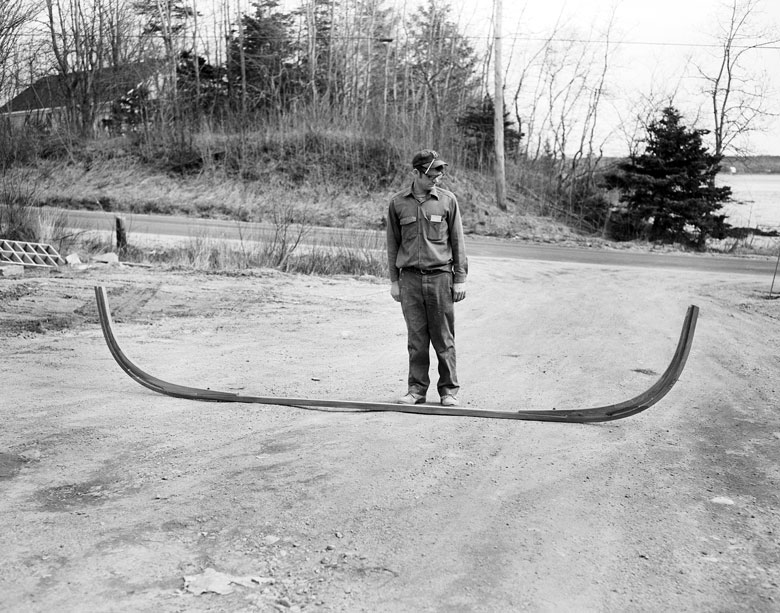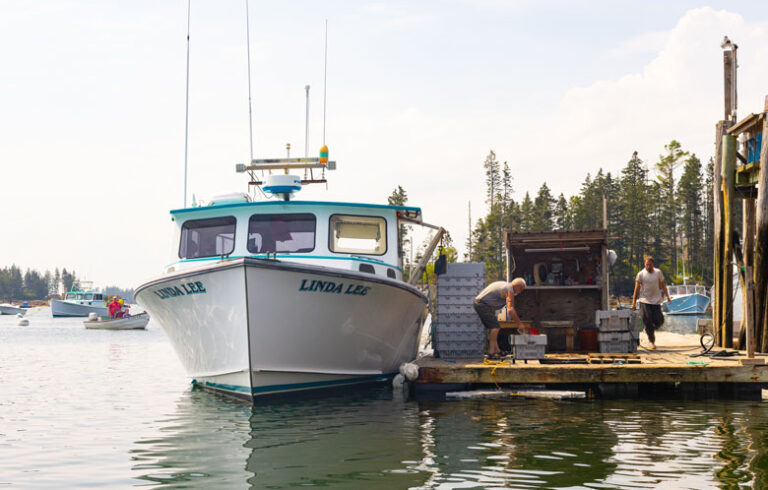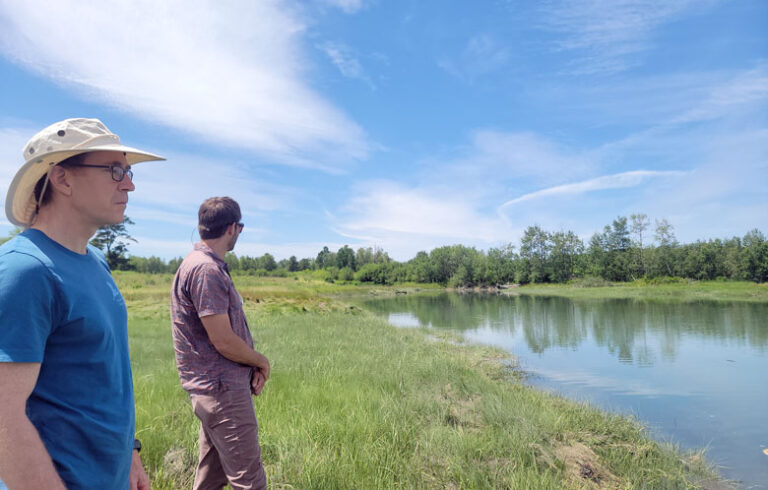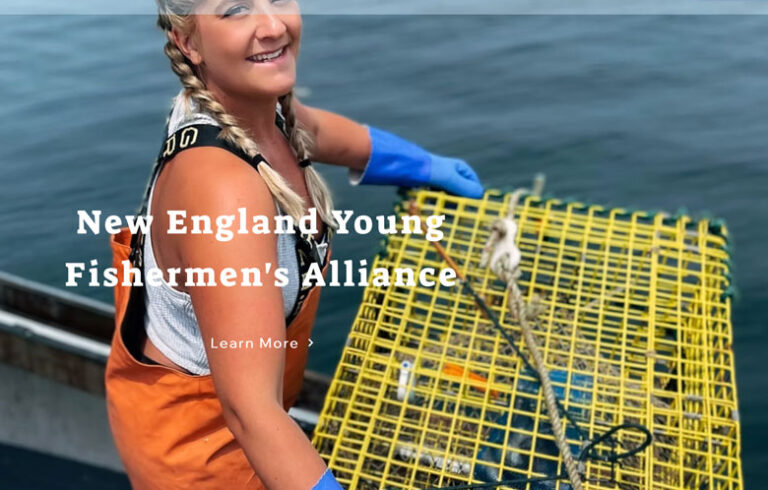I have always been drawn to unusual photographs. I love how the camera can take a slice out of the real world, which, once removed from its context, becomes a riddle for the viewer to figure out.
I had this reaction when I first saw the accompanying photograph of Jimmy Steele of Brooklin. If you didn’t know that he was a boat builder or knew very little about boat building, as I did at the time, you might wonder: what is going on in this photograph?! Is that a giant two-headed ski or an enormous bow and arrow he’s eyeing up? It just looks so odd.
Of course, when the story is revealed, it all makes sense.
The photo was taken by photojournalist Everett “Red” Boutilier in 1975 using his old school Speed Graflex press camera. Had it been taken from the other direction, you would have seen Jimmy’s shop building and his sign advertising “New Downeast Peapods For Sale,” which would have offered a significant clue.
The shape of the sign, which was in the shape of a boat, would be another clue, especially if you thought peapods grew only on a vine. Armed with this knowledge you can connect the dots and see this is part of a small(ish) boat.
Peapods are double ended, meaning they can be rowed in either direction, making them very maneuverable…
More specifically, it’s the entire backbone of a peapod, consisting of two stems, two gripes, and a single keel timber—all of oak, bolted together with bronze, like that of a traditionally built Downeast peapod, a double ended rowing boat.
Jimmy Steele was born in Ellsworth and got an early start building boats with stints at the Weber Cove Yacht Yard in East Blue Hill as well as at Arno Day’s yard in Brooklin before drifting into high-end home building.
In 1965, Steele learned that Capt. Havilah Hawkins had just acquired the schooner Mary Day and was giving up his winter business of building peapods for summer people. Steele decided to fill that void and over the next 40 years built more than 170 peapods, many of which are still in use today. He once said, “Building houses made me rich but building peapods made me famous.”
Peapods are double ended, meaning they can be rowed in either direction, making them very maneuverable, and they were traditionally used for lobstering inshore and as yacht tenders.
Each of Steele’s Downeast peapods were 13-feet, 6-inches on the gun’ales, 4-feet, 6-inches wide, and 18-inches high amidships. They were planked with cedar over oak frames with an oak keel and oak stems. He offered three different models featuring different species of wood that he named the “Chevy,” the “Cadillac,” and the “Rolls Royce.”
Boutilier photographed and interviewed Steele again in 2002. His photographs of Steele, his shop, and peapods can be found in the Penobscot Marine Museum online database.
Steele died in 2008 and his wife Pam and his friend Donald Tofias donated much of the contents of his shop to the museum.
This season a new permanent exhibit opened at the museum that recreates his shop and displays his jigs, tools, and ephemera, as well as many peapod samples. The museum is open through Oct. 17 and there is no longer a detour in Searsport. Come visit!
Kevin Johnson is photo archivist at the Penobscot Marine Museum in Searsport. Learn more about the museum at PenobscotMaineMuseum.org.





